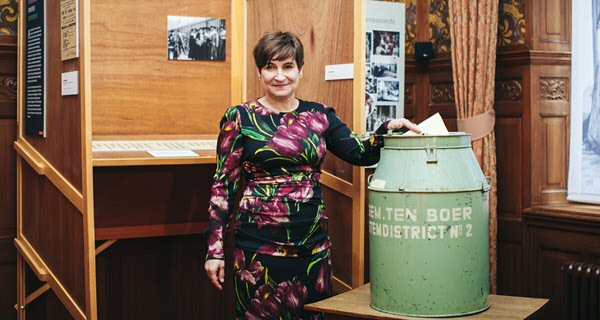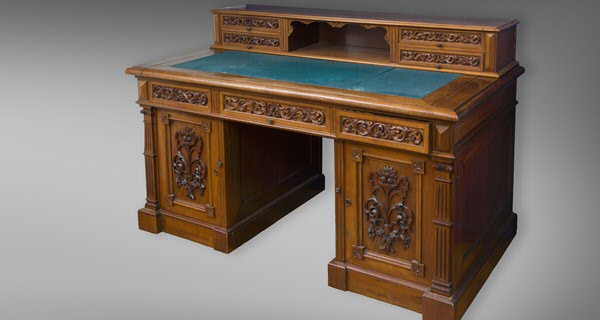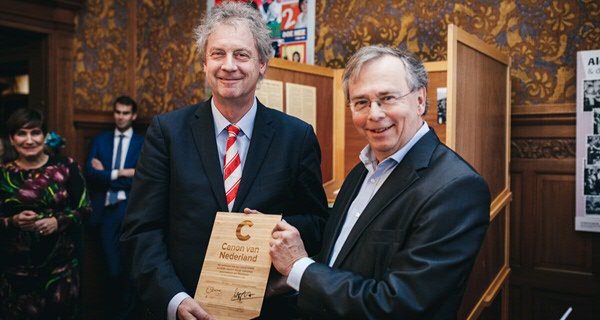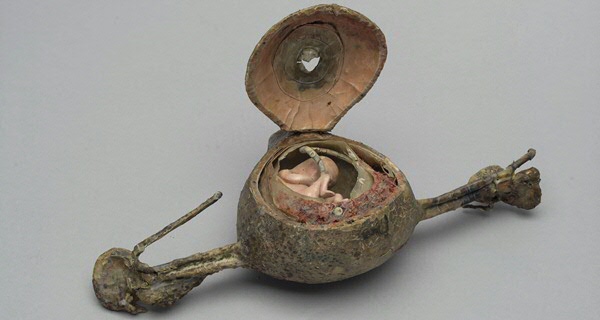Top Aletta Jacobs pieces now permanent part of Dutch history (video)
To mark the official opening of the refurbished Aletta Jacobs room on Thursday 8 March by Lilianne Ploumen, the University Museum Groningen is presenting three iconic objects from Dutch history. These were specially selected for the ‘Canon of Dutch History’ and give a unique insight into the history of women’s emancipation. Lilianne Ploumen was in Groningen to receive the University of Groningen’s Aletta Jacobs Prize as a champion of the rights of women and girls all around the world.
In presenting these pieces, the University Museum Groningen officially enters the national Canon Network. Willem Bijleveld, director of the Netherlands Open Air Museum, presented Prof. Elmer Sterken, President of the University of Groningen, with the Canon Shield that symbolizes membership of the network.
Highlights of the Canon of Dutch History
The Canon comprises 50 ‘windows’ through which you see people, events and objects that together tell the history of the Netherlands. Aletta Jacobs is one of these windows. Three iconic objects from Dutch history are presented in the Aletta Jacobs room in the University Museum, because they give a unique insight into the history of women’s emancipation. They bring you closer to the life of Aletta Jacobs and the zeitgeist of her time.
The objects comprise a trunk belonging to Aletta Jacobs, a womb model by the Auzoux firm and Aletta Jacobs’ desk.




The trunk tells the story of Aletta Jacobs’ major world trips in 1911 and 1912. She travelled around the world with the American Carrie Chapman Catt, the first chair of the International Woman Suffrage Alliance, to give shape to the global fight for female emancipation. The trunk accompanied her on these trips. It contains the hats, gowns and jewellery that she wore when speaking to groups or meeting important people. Her initials are still just about visible.
The womb model by the Auzoux firm embodies the modernization of medicine in the 19th century, when observational learning was introduced. The model from 1844 was still in use when Aletta Jacobs began studying medicine in Groningen. During her studies she discovered how doctors treated women, how little women knew about their bodies and above all how little control they had over their own bodies. The womb model thus symbolizes knowledge of and control over the female body.
Aletta Jacobs must have used her desk for her extensive writing. She had a huge network. In her work as a GP she sat at her desk to write letters and prescriptions for her patients. She probably also sat at her desk during many consultations with female patients. She may have sat here in 1898 to write her book De vrouw. Haar bouw en haar inwendige organen, which aimed to teach women more about their own bodies.
Canon Network
With the Canon of the Netherlands as the basis, museums throughout the Netherlands are joining forces to put the diversity of Dutch history in the spotlight. Participating museums are presenting iconic pieces from Dutch history and collaborating in 2018 on a special Canon programme. The Canon Network is a growing network of 22 museums at present, spread throughout the country. The national collaboration is the initiative of the Netherlands Open Air Museum in Arnhem, where an exhibition that provides an overview of the Canon of the Netherlands opened in September 2017. The Canon Network is sponsored by the Mondriaan Fund, the K.F. Hein Fund and the Gravin van Bylandt Foundation.
More news
-
15 September 2025
Successful visit to the UG by Rector of Institut Teknologi Bandung
